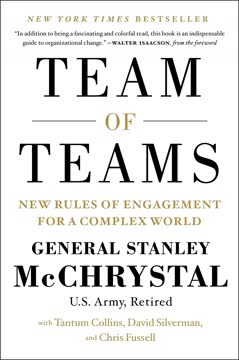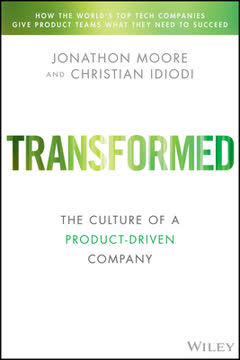Key Takeaways
1. Master the Art of Connecting to Grab Attention
Connecting is the ability to engage and manage people's attention in today's busy world.
Attention is currency. In our distraction-filled world, capturing and maintaining attention is crucial for effective communication. To connect successfully:
- Give people what they want and value upfront
- Tailor your approach to the listener's preferences
- Be authentic and relatable
Mastering connection prevents tune-out and sets the stage for conveying information and convincing others to act. It's the foundation for all effective communication in personal and professional settings.
2. Stay Present and Listen Actively to Engage Others
Staying in their moment means fully focusing on the needs of the people with whom you're communicating.
Be fully present. Active listening and engagement are essential for meaningful communication. To stay in the moment:
- Focus entirely on the speaker, avoiding distractions
- Listen for intent, not just words
- Observe non-verbal cues and body language
By staying present, you demonstrate respect and gain valuable insights. This approach builds trust and encourages open, productive dialogue.
3. Frontload Your Message for Maximum Impact
Frontloading is my term for quickly nailing what's relevant to your listener, so they immediately grasp what's in it for them and don't tune you out.
Lead with the essentials. Capture attention immediately by presenting the most critical information first. To frontload effectively:
- Identify the core message or "big idea"
- Tailor the opening to your audience's interests
- Use a compelling hook or statement
Frontloading prevents information overload and ensures your key points are heard. It's particularly crucial in today's fast-paced, short-attention-span world.
4. Use Goldilocks Candor to Balance Honesty and Tact
Smart candor works wonders because it demonstrates integrity, which keeps people connected to you.
Find the right balance. Effective communication requires honesty without being harsh or sugarcoating. To achieve Goldilocks candor:
- Be direct but respectful
- Offer constructive feedback with solutions
- Create a culture that values open, honest communication
Balancing honesty and tact builds trust, encourages improvement, and fosters a positive work environment. It allows for addressing difficult topics without damaging relationships.
5. Convey Information Visually for Clarity and Retention
Your brain processes visuals up to ten times faster than mere words, according to research in both educational theory and cognitive psychology.
Show, don't just tell. Visual communication enhances understanding and retention. To leverage visual power:
- Use charts, graphs, and images to illustrate points
- Employ contrast to highlight key information
- Rethink PowerPoint presentations for maximum impact
Visual aids simplify complex ideas, make data more digestible, and create lasting impressions. They complement verbal communication, making your message more compelling and memorable.
6. Leverage the Power of Three in Communication
Three is the world's most powerful number for receiving information, which means it's a secret shortcut to convey messages powerfully.
Think in triads. The human mind naturally gravitates towards patterns of three. To harness this power:
- Organize information into three main points
- Present three options or choices when possible
- Use triads in slogans, taglines, and key messages
The rule of three makes information more memorable, persuasive, and satisfying to the listener. It provides structure without overwhelming the audience.
7. Tell Stories to Make Your Message Memorable
Stories can enhance productivity, reward performance, demonstrate values, capture lessons learned, and preserve corporate heritage to create understanding and change in organizations.
Harness narrative power. Stories engage emotions and make information relatable. To effectively use storytelling:
- Share personal or company success stories
- Use analogies to explain complex concepts
- Keep stories simple, relevant, and purposeful
Stories create connections, illustrate points vividly, and make your message stick. They transform dry facts into compelling narratives that resonate with your audience.
8. Sound Decisive to Inspire Confidence and Action
If you sound like a wimp, you'll be treated like one.
Project confidence. Decisive language inspires trust and action. To sound more decisive:
- Eliminate hedging words and phrases
- Use active voice and strong verbs
- Contribute confidently in meetings
Sounding decisive doesn't mean being inflexible or arrogant. It's about communicating with clarity and conviction, which encourages others to listen and act on your ideas.
9. Transfer Ownership to Create Commitment
Self-discovery is the most persuasive argument.
Empower others. When people feel ownership of an idea, they're more likely to support and act on it. To transfer ownership:
- Involve others in decision-making processes
- Explain the reasoning behind decisions
- Use peer influence to build support
Transferring ownership transforms compliance into commitment. It creates a sense of shared responsibility and motivation, leading to better outcomes and stronger teams.
10. Adjust Your Energy to Attract and Influence Others
Energy boosts likability, which is a key ingredient to generate commitment from others.
Calibrate your presence. Your energy level significantly impacts how others perceive and respond to you. To adjust your energy effectively:
- Match your energy to the situation and audience
- Use vocal variety to convey enthusiasm
- Pay attention to facial expressions and body language
The right energy level makes you more approachable, engaging, and persuasive. It helps you connect with others on an emotional level, enhancing your ability to influence and lead.
Last updated:
FAQ
What's "Talk Less, Say More" about?
- Communication Habits: "Talk Less, Say More" by Connie Dieken focuses on three key communication habits: Connect, Convey, and Convince. These habits are designed to help individuals communicate more effectively in a fast-paced, attention-deficit world.
- Influence and Action: The book provides strategies to influence others and make things happen by managing attention, information, and action.
- Practical Advice: It offers practical, actionable advice for improving communication skills, making it relevant for leaders and anyone looking to enhance their ability to get their points across.
Why should I read "Talk Less, Say More"?
- Improve Communication Skills: The book is ideal for anyone looking to improve their communication skills, whether in personal or professional settings.
- Actionable Strategies: It provides actionable strategies that can be implemented immediately to see improvements in how others respond to you.
- Leadership Development: For leaders and emerging leaders, the book offers insights into creating a high-performance culture through effective communication.
What are the key takeaways of "Talk Less, Say More"?
- Connect-Convey-Convince Method: The book emphasizes the importance of connecting with your audience, conveying your message clearly, and convincing them to take action.
- Attention Management: Managing attention is crucial in today's distraction-driven world, and the book provides techniques to keep people engaged.
- Clarity and Commitment: It highlights the need for clarity in communication and how to gain commitment from others to achieve desired outcomes.
How does the Connect-Convey-Convince® method work?
- Connect: Focus on managing attention by giving people what they want and value, ensuring they stay engaged with your message.
- Convey: Manage information by using portion control to avoid overwhelming your audience, ensuring clarity and understanding.
- Convince: Manage action by influencing behaviors and decisions, creating commitment rather than mere compliance.
What are some practical tips from "Talk Less, Say More"?
- Frontloading: Quickly nail what's relevant to your listener to prevent tune-out and ensure they grasp the main idea immediately.
- Use Visuals: The book suggests using visuals to convey messages effectively, as the eyes trump the ears in communication.
- Tell Stories: Incorporate storytelling to make your message memorable and engaging, providing a longer shelf life than mere facts.
What are the signs of weak communication according to "Talk Less, Say More"?
- Lack of Engagement: Difficulty in getting people to listen or pay attention to your ideas.
- Overcomplication: Tendency to confuse people or make things sound more complicated than they are.
- Indecisiveness: Frequent changes of mind or appearing indecisive, which can undermine your credibility.
How can I improve my communication using the Connect habit?
- Stay in Their Moment: Focus on the needs of the people you’re communicating with, managing your own attention to win theirs.
- Avoid Code Red: Control your emotions in high-stress situations to maintain effective communication.
- Frontload Messages: Deliver the most relevant part of your message first to keep your audience engaged.
How does the Convey habit help in managing information?
- Portion Control: Use portion control to manage your messages, ensuring clarity and preventing information overload.
- Talk in Triplets: Structure your messages in multiples of three, as the mind craves information in this format.
- Visual Aids: Incorporate visuals to enhance understanding and retention of your message.
What strategies does "Talk Less, Say More" suggest for convincing others?
- Sound Decisive: Communicate with confidence to gain respect and influence others to act.
- Transfer Ownership: Shift your ideas to others so they feel involved and committed to the outcome.
- Adjust Your Energy: Use the right level of energy to engage and motivate others to take action.
What are the best quotes from "Talk Less, Say More" and what do they mean?
- "Less is more": This quote encapsulates the book's philosophy that effective communication is about saying more with fewer words.
- "Connect-Convey-Convince": This mantra highlights the three-step process to becoming a high-performance communicator.
- "Give people what they want and value": This emphasizes the importance of understanding your audience to keep them engaged.
How can I apply the Connect-Convey-Convince® method in my daily life?
- Daily Interactions: Use the method in everyday conversations to ensure you are heard and understood.
- Professional Settings: Apply the strategies in meetings and presentations to influence decisions and actions.
- Personal Growth: Continuously practice and refine these habits to improve your overall communication effectiveness.
What are some challenges in implementing the strategies from "Talk Less, Say More"?
- Breaking Old Habits: Overcoming ingrained communication habits can be challenging but is necessary for improvement.
- Consistency: Consistently applying the Connect-Convey-Convince method requires conscious effort and practice.
- Adapting to Situations: Tailoring the strategies to different audiences and contexts can be difficult but is crucial for success.
Review Summary
Talk Less, Say More receives mixed reviews, with an average rating of 3.53/5. Some readers find it insightful and helpful for improving communication skills, praising its concise format and practical tips. Others criticize it for being too basic, filled with common sense advice, and lacking depth. The book's focus on the "3 C's" (Connect, Convey, Convince) is appreciated by some, while others find it overly simplistic. Several reviewers mention its relevance to corporate settings and leadership roles, but some feel it falls short in providing actionable strategies for everyday interactions.
Similar Books










Download PDF
Download EPUB
.epub digital book format is ideal for reading ebooks on phones, tablets, and e-readers.




